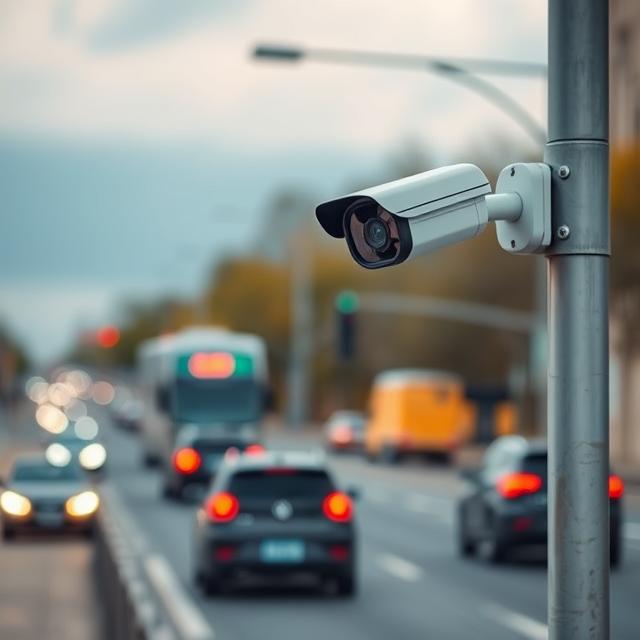During the age of smart cities and digital transformation, transportation infrastructure is being revolutionized at unprecedented levels. Perhaps the largest contributor to it is the spread of AI-powered traffic cameras and battery-powered video cameras. These technologies are revolutionizing the way that cities monitor, patrol, and react to congestion and increasing public safety and mitigating congestion. They’re not being adopted out of convenience alone, it’s a strategic move toward smart, secure urban mobility.
Smarter Surveillance with AI Integration
AI-powered traffic cameras possess machine learning software to learn, recognize patterns, read plates, and detect anomalies in real-time. The conventional cameras just click a picture, whereas the AI-driven cameras actually observe the video on their own and immediately warn the authorities about traffic offenses, accidents, or suspicious behavior. This minimizes the likelihood of human mistakes and enables the authorities to respond in real-time.
For instance, if a car runs through a red light at full speed, the system is able to auto-record the event, record the license plate number, and penalize it without the intervention of humans. Two, traffic light phase durations are maximized by artificial intelligence approaches through monitoring automobile travel, minimizing congestion, and reducing delay. They all equally help enhance traffic efficiency and safety as a whole.
Cities such as Singapore, Los Angeles, and Tokyo are already investing in AI-powered traffic cameras for increased enforcement and data provision to support infrastructure planning. The more widely deployed worldwide, the better cities understand the potential for smart cameras to be greater than surveillance expansion, but the central decision-making tool.
The Flexibility of Battery-Operated Solutions
Where AI adds capability, mobility and flexibility are added where battery-powered video cameras add to the domain of monitoring. Historically, monitoring systems are tied up with cumbersome cable and hardwired power supplies, with restrictions on where cameras can be installed. Battery-powered deployments, by contrast, can be used in remote, transient, or hazardous environments without intrusive infrastructure.
These render them the most suitable to be used in construction zones along roads, event traffic control, or areas of poor power supply. They are simple to install in response to changed traffic patterns, accidents, or emergencies because of their mobility. More recent versions are fitted with long-lasting batteries, solar-powered charging, and waterproof designs to facilitate continuous use under varying conditions.
For rural or growing city areas, battery-operated video cameras provide a cheap means of enhancing road safety without substantial investment in hard equipment. As mobile units, they provide the ability to have a quicker response to public safety.

How AI and Battery-Powered Video Cameras Improve Traffic Security
Enhancing Traffic Security Through Data Insights
Both battery-powered video cameras and artificially intelligent traffic cameras add their value to a growing pool of traffic intelligence. All that intelligence is used to mark hazardous intersections, hazardous driving habits, and recurring causes of traffic congestion. All that intelligence can be used to inform the city planner’s choice regarding infrastructure planning, traffic signal rotation, and traffic safety programs.
Besides that, this information supports emergency response planning. In the event of a pile-up, for instance, AI solutions will be able to diagnose the accident caused earlier and stream video real-time to responding emergency responders. Combined with mobile battery-powered devices, surveillance is no longer limited to stationary locations, and full visibility into impacted areas can be achieved.
The convergence of power on-the-go and AI is therefore revolutionizing not only how traffic has been managed, but how traffic dangers are being avoided and regulated. These technologies enable cities to be anticipatory rather than reactive, potentially saving lives and preventing losses due to delays or accidents.
Integration and Future Outlook
As smart city projects expand, the usage of AI-powered traffic cameras and battery-powered video cameras expands. Multi-device information-sharing networks allow information to be shared between devices, allow central monitoring, and allow predictive analysis. For instance, machine learning algorithms may predict traffic rush hour times and dynamically adjust surveillance coverage based on mobile cameras.
The era of traffic monitoring is now with this network of interconnected systems, with AI analyzing the data and battery units providing coverage flexibility. They constitute a strong security system that is urbanization- and transportation-management-demand-resilient combined.
AI-powered traffic cameras and battery-powered video cameras work together to improve traffic security by enhancing surveillance, flexibility, and real-time analysis.
How AI Is Reshaping Space Weather Monitoring and Geomagnetic Storms
The Impact of Neuromorphic Computing Applications and Systems in AI Use



